Adding outdoor plants to your patio not only enhances the design and style but also provides you with numerous health benefits, as well as brings pops of color to your outdoor space.
We’re sharing tips and the best outdoor plants for patio and outdoor living down below.
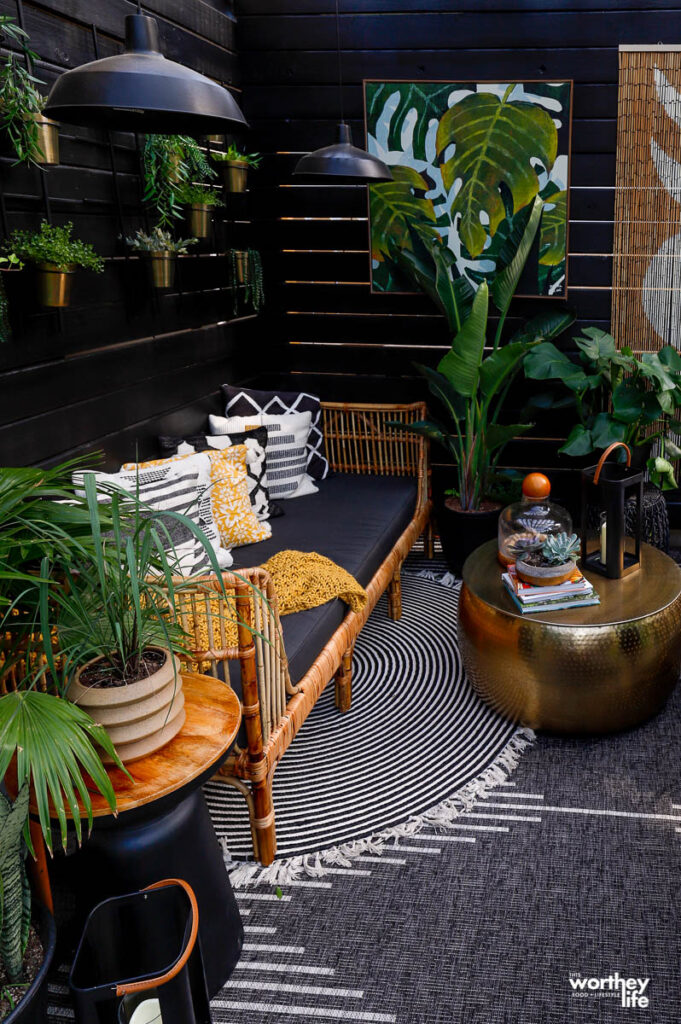
Tips + Best Outdoor Plants For Patio + Outdoor Living |
There are many great benefits to adding plants to your outdoor living areas. Plants help improve the air you breathe, add an element of nature to your home, and can even increase your system’s value by as much as 20%.
From tropical palms to hibiscus, bougainvillea to humble grasses, introducing plants into your outdoor spaces is a refreshing way to spruce up your outdoor space. But while many homeowners consider indoor plants for their own homes or offices, they don’t often think about plants in outdoor living spaces.
With a bit of creativity and the right plants, your outdoor living spaces can be transformed into an oasis filled with beauty and life.
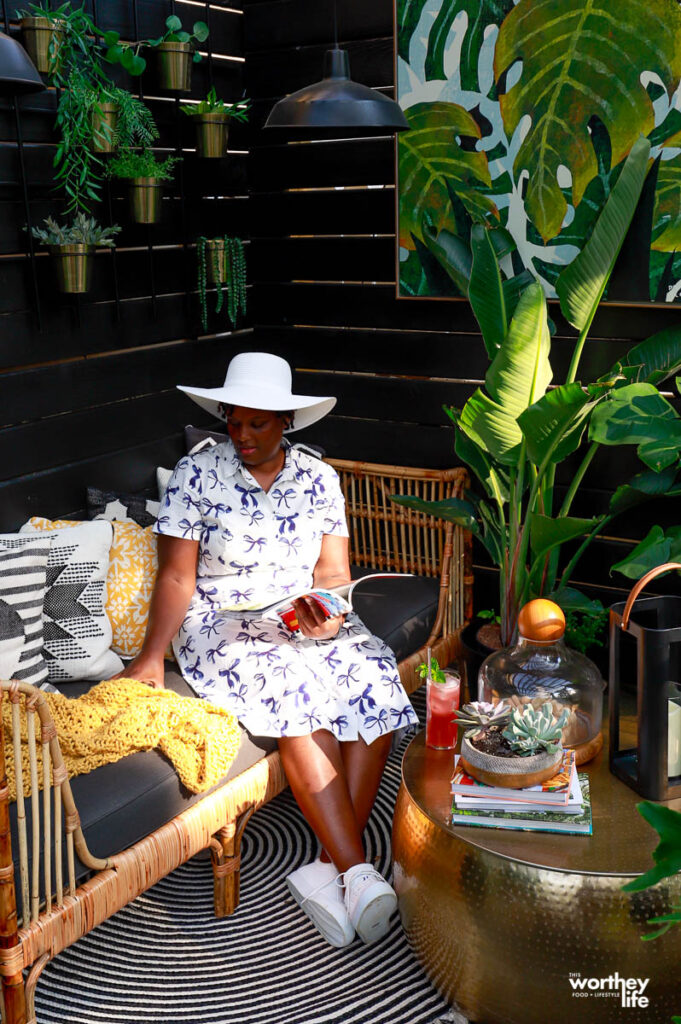
Why you should use plants in your outdoor living spaces
- Plants provide natural beauty to any space.
- They absorb carbon dioxide and release oxygen.
- They help clean the air by absorbing dust, toxins, and chemicals.
- Plants can be used as a screen or wind barrier for outdoor living spaces.
- Adding plants to your home will increase its value – they add color, texture, and life to any room.
- There are many types of plants that you can choose from depending on what you want them for (see below).
- They increase your home’s curb appeal by giving it an inviting, welcoming feel.
- Most plants require little maintenance – water them regularly.
- Planting flowers in pots on your front porch will make it look more welcoming to guests.
- Adding plants to your outdoor living space is an easy way to add color and life without spending too much money.
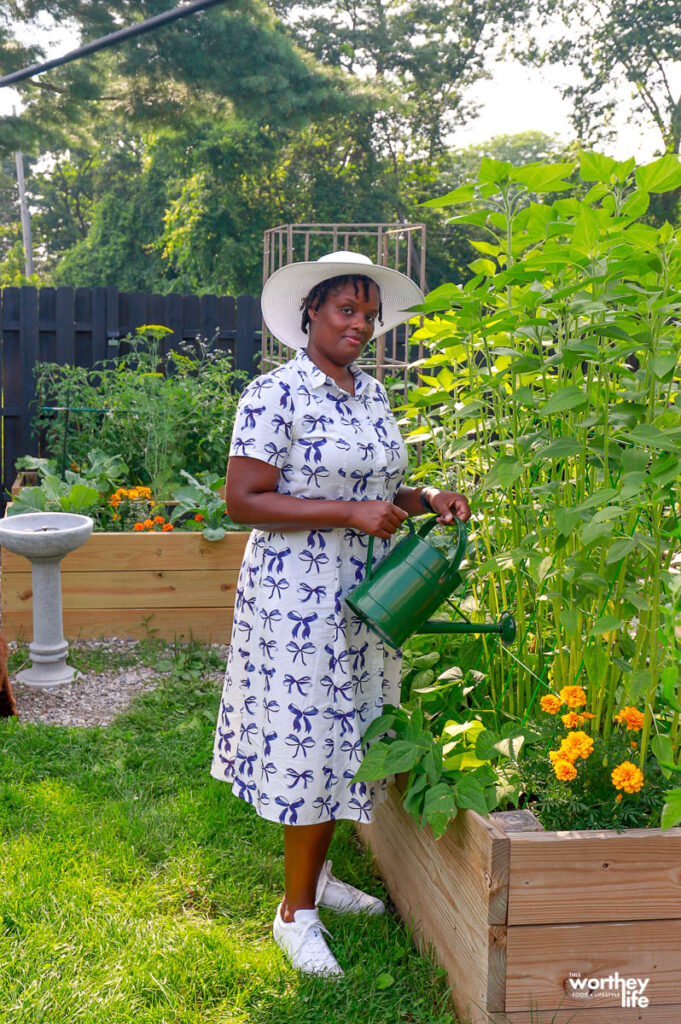
Pro-tip: Having a garden also helps bring in color and additional benefits. You can learn more about our garden and reasons to start a garden shared over here.
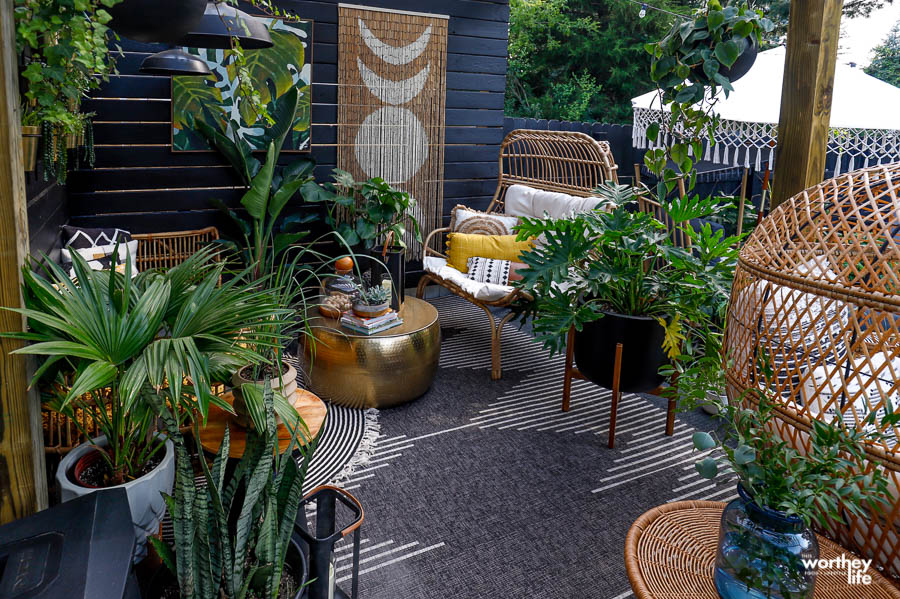
Tips on picking Outdoor Plants For Patio
Plants are a great way to spruce up your outdoor space and make it more appealing. Bringing plants into your outdoor living spaces adds instant pops of color. We love using plants outdoors, as well as having indoor plants.
You’ll need to consider how much sun and shade there will be, which type of soil you have (or want), what types of bugs are in your area, etc. Different plant varieties perform differently when it comes to these factors.
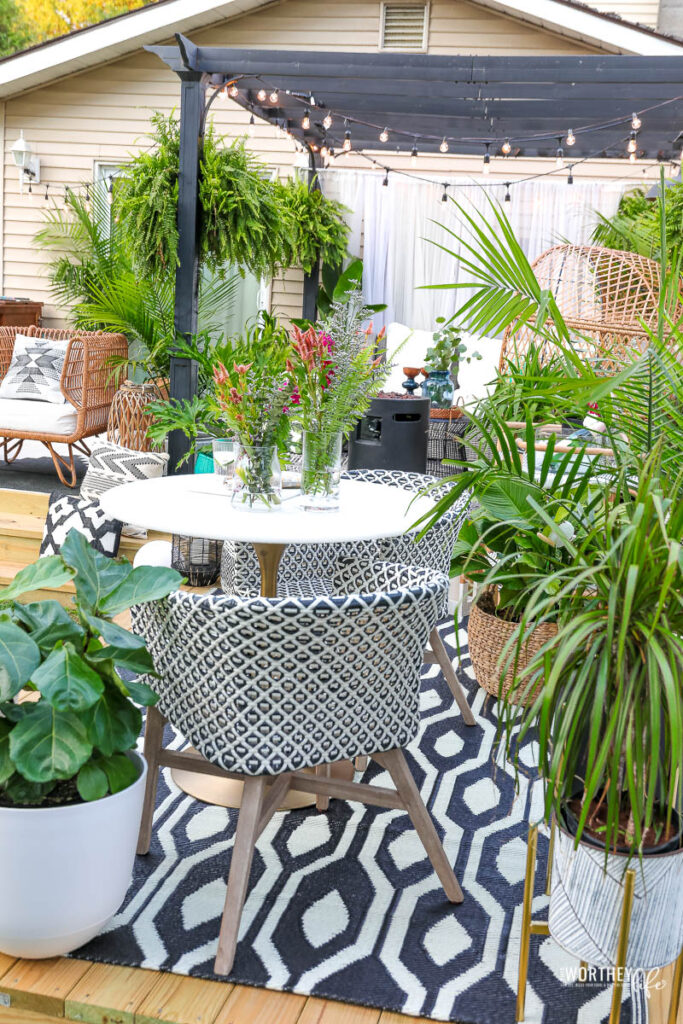
Here’s what you need to know when choosing which plants will work best for your outdoor space:
This year, I worked on being intentional about the types of plants we put in our backyard space, also known as The W.
- Choose plants that grow well in the climate of where you live.
- Select tropical or hardy varieties, depending on the season; if uncertain, choose drought-tolerant flowers such as succulents.
- Avoid poisonous plants for small children and pets (i.e., oleander).
- You will also want to choose plants that can help keep unwanted bugs away, like mosquitos.
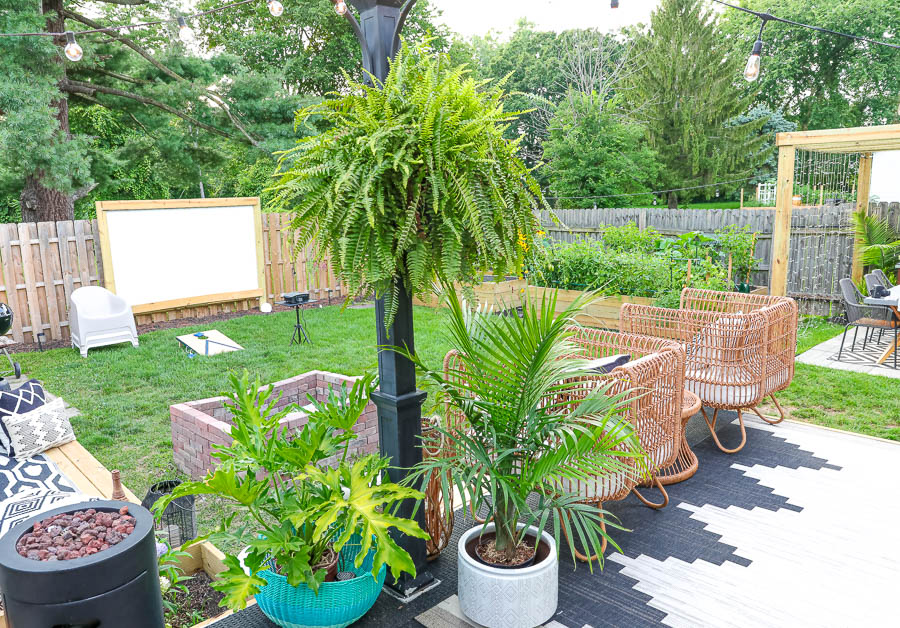
Best plants for outdoor living
Include a variety of plants to create an outdoor living space that is not all green. Place some shrubs and trees for shade, understory, or as accents in your landscape design.
Select perennials such as daylilies, bleeding hearts, irises, and peonies so you can enjoy them year-round. Consider adding vines like honeysuckle, wisteria, or jasmine to cover fences or climb up trellis designs.
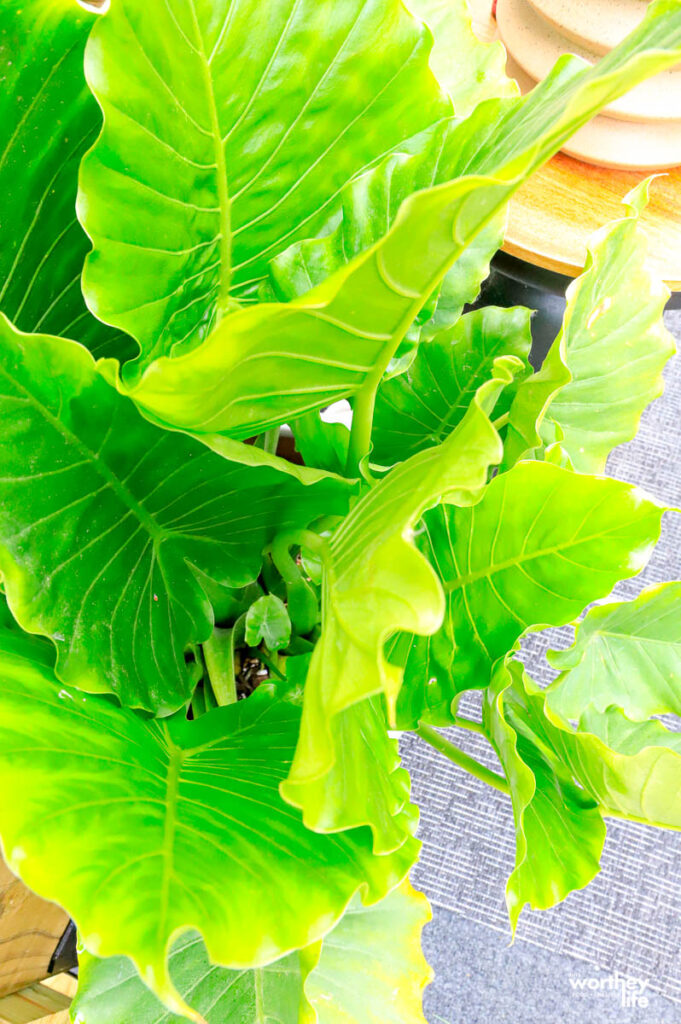
There are many types of decorative succulents available too! You’ll find varieties in almost every color from rosy pink to deep purple with shapes including spheres, clusters, and clumps—or choose one type with multiple colors on each leaf for a sculptural effect in the garden bed.
You can use herbs, edible flowers, and other plants for a more productive landscape. Plant some strawberry or raspberry bushes (both are perennial) to give sweet treats in the summertime. Basil, oregano, and thyme will keep your garden smelling fresh all year round.
The best plants for outdoor living are ones that have low water requirements and thrive in the sun.
Make sure you purchase a plant with a compact shape and small leaves to avoid blocking natural light from coming in through your windows or patio doors.
Consider what color the plant will be when it’s fully grown – this will help make it stand out against other plants, as well as add visual interest to your space.
Don’t forget about the ground cover. Many varieties of grasses or shrubs work great on patios and in gardens because they’re easy to maintain and don’t require much attention.
If you want something more exotic, consider getting an air plant – these types of plants do not need soil; instead, they get all their nutrients from the air around them.
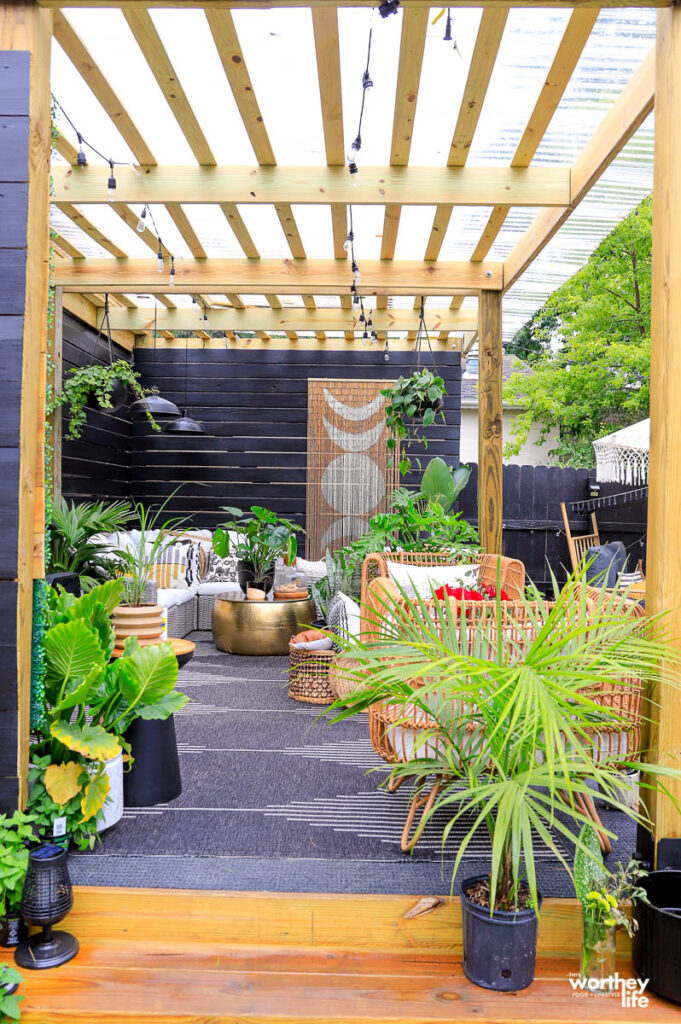
- Cacti plants are durable and easy to maintain. They also can grow without direct sunlight.
- Succulent plants are perfect for outdoor living because they can be planted in various containers, including cacti pots or dish gardens with pebbles or small rocks at the bottom.
- Golden Pothos is a low-maintenance plant that does well indoors and out.
- The Butterfly Bush which flowers all summer long and is great for attracting butterflies to your garden.
- Ferns and other foliage plants need more water than succulents but offer shade from the sun during hot summer days. They also do well with moist soils and shady areas like under trees or next to walls because they can grow on top of other plants without competing for sunlight, as often does happen between taller species like conifers. We love to get our ferns from the local farmer’s markets or local greenhouses.
- Consider using a trellis for climbing plants like ivy, jasmine, and honeysuckle; it can be used as an attractive focal point while also providing some privacy from neighbors.
Remember that not every type of plant is suitable for every climate – check your local weather before making any purchases!
Plants that help keep bugs away
- To help repel mosquitoes, you want to get citronella, lemongrass, peppermint, and lavender.
- For repelling flies, you want to have basil, catnip, geraniums, and mint.
- Plants that repel ants are rosemary and thyme.
- Planting marigolds around the perimeter of your home will help keep away moths and other bugs.
- Planting garlic in pots near windows or on a porch will deter pests such as spiders from coming inside your house.
- Avoid using pesticides to get rid of unwanted insects – they can be harmful to you and the environment!
Planting flowers around your patio is an important way to add beauty without taking up space on the ground for sitting areas children would play on due to their delicate nature.
We were intentional about some of the flowers we planted to help keep away mosquitos and other bugs.
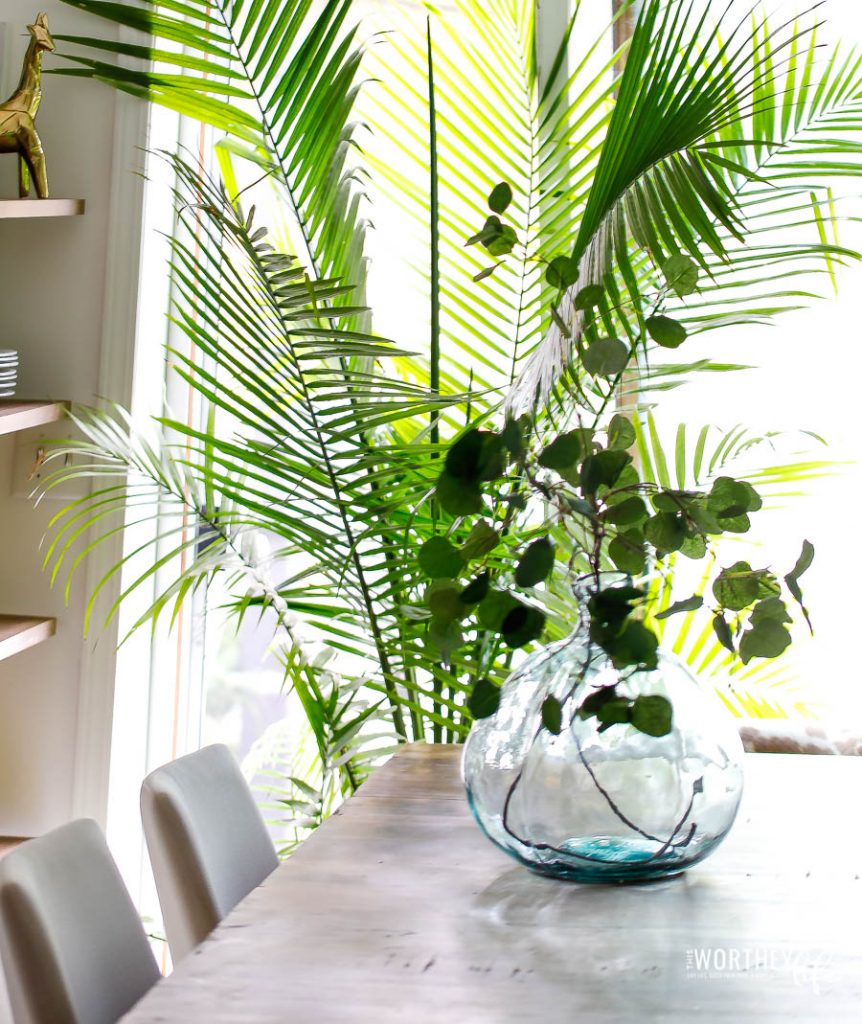
Can you use artificial plants outdoors?
What are some of the best artificial plans to use in your outdoor space? If you are looking for artificial plants that can be used outdoors, you need to consider factors like their weatherability and whether or not they will fade over time.
Here’s some useful information on the topic of fake outdoor plants. I’ll be honest to say I wasn’t a fan of putting fake plants in our outdoor spaces, but this fake plant wall shared below changed my mind.
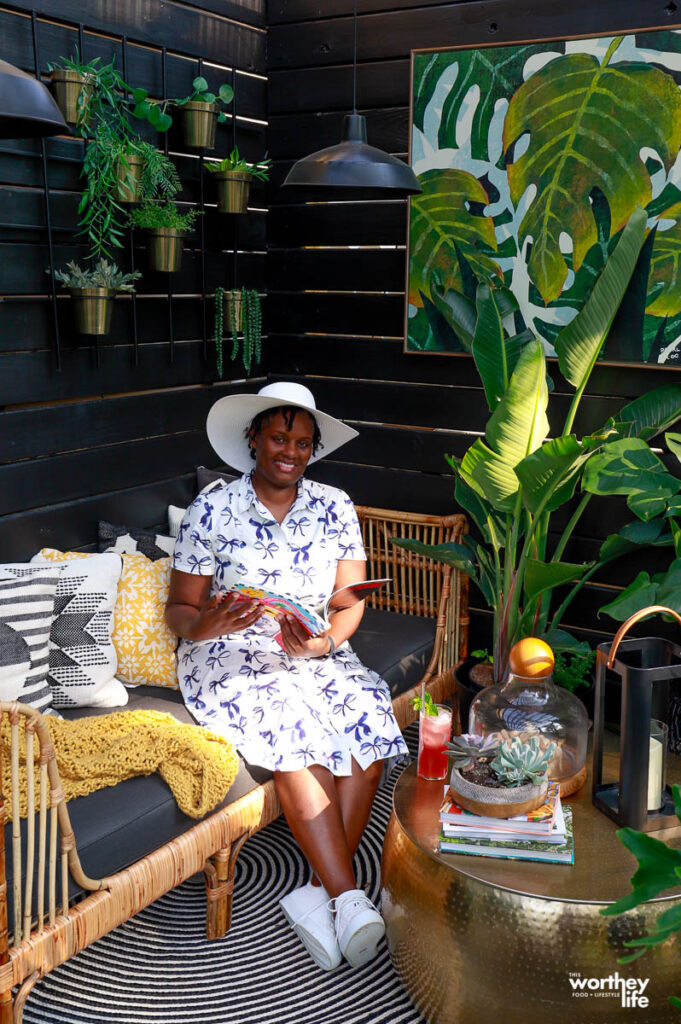
Advantages of fake outdoor plants for patio
There is a huge variety available: from cacti to palms and everything in between; you have an entire range of plants and flowers that can add color to your yard. Outdoor spaces with a lot of artificial flora also tend to look less barren than those without them.
They are inexpensive. Fake plants generally cost much less money than real ones because they require little care or replacement. Instead of buying new plants every season, you have to invest money into fake plants one time to last several years.
They are practically maintenance-free. You do not have to water, weed, or fertilize these artificial plants, so you can spend more time enjoying your gardens and less time tending to them. This is perfect if you want the look of an oasis with little effort.
You don’t have to worry about insects or other pests if you opt for fake plants. There is no chance that you will get infested with pests of any kind. The downside of this option is the real plants help keep away insects and pests too.
Artificial plants can last longer than your actual patio flower beds. If you use artificial plants instead of living ones, you can change them out every season without hassle. You can find some that are low maintenance and last a long time, so you never have to worry about them dying prematurely on their own.
Some areas don’t allow certain types of plants or flowers due to weed laws. If your area doesn’t allow live plants or certain kinds of flowers, artificial plants will not be prohibited. If you live in an area like this, then there is no worry about having your beautiful patio filled with weeds and unwelcome grasses that will take over everything else. You may also live in a house or apartment where the landlord won’t allow you to have outdoor plants.
They are effortless to clean. Even though some types can be a little greener than others when it comes to cleaning them, they are effortless to clean. All you need is soap and water to get them really clean and look fresh again.
I recommend cleaning them after the season is over, before storing them.
You can use them indoors as well as outdoors. Many people don’t realize that artificial plants can be used both inside the home and outside. At night time, put some candles around your artificial plants, and they look like real ones.
You may have a garden to plant some flowers or herbs, but the climate is not friendly to plants. During wintertime and all other seasons, when it’s too hot, too cold out there for your favorite flower or herb, you can put an artificial one there as a stand-in to real plants.
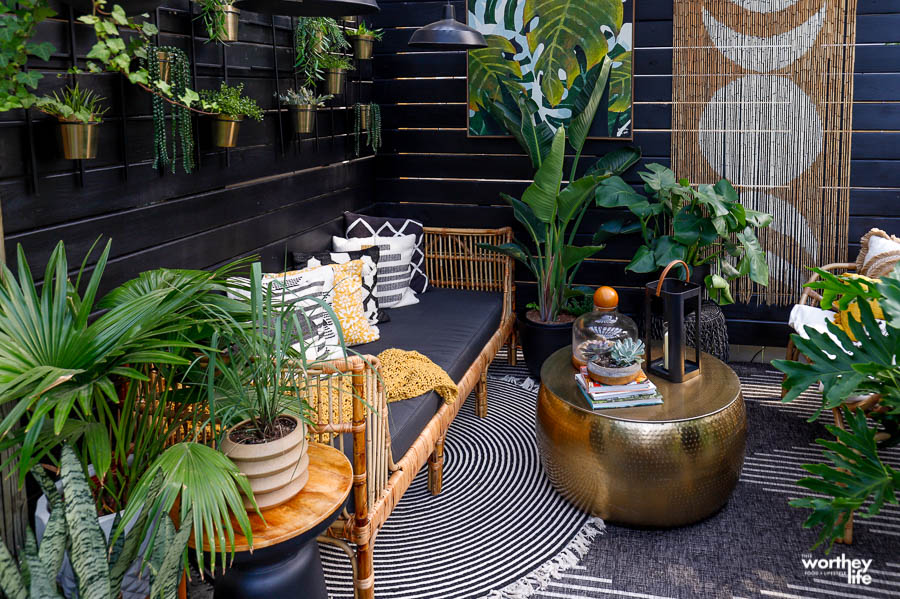
Outdoor plants are a great way to add life, color, and texture to your backyard. They also provide many benefits for both you and the environment!
We hope that this blog post has given you some ideas and tips on incorporating these beauties into your outdoor space so you can enjoy their beauty all summer long!
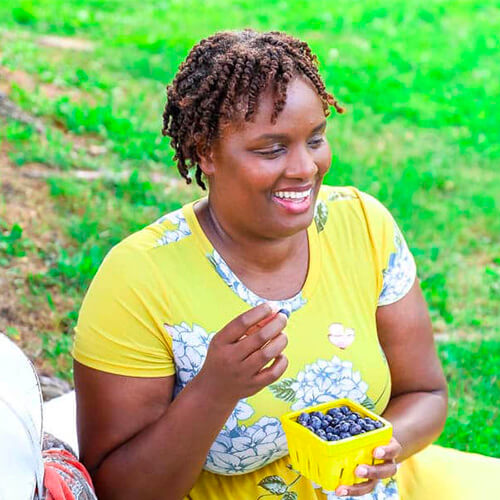

Leave a Reply